“Oh, hey!! Hi Shaun! Where are you?! Carousel 26? Ok, I’m at 23.” I try to interject, “I could meet you-” Jeneva Wright of the Submerged Resources Center (SRC) continues, “I’ll see you in a minute, running towards you now!” I’ve never met Jeneva, but I soon see a brunette woman with black-framed glasses, briskly jogging with a rolling bag. She’s going up the stream of a roaring river of weary travelers. She’s on the phone with someone else, “Tell them we’ll be there in 30 seconds! Tell them you’ll move if we aren’t there!” That must be Jeneva- she gives me a subtle head nod and now I’m joining her in the brisk upstream jogging.
We hop in a red SUV with a Louisiana license plate. The windows are rolled down. The South Florida humidity is in full effect, but since the sun is down it’s pretty comfortable. Jeneva starts chatting with the driver and introduces me. Enter Arlice Marionneaux, Biscayne National Park Intern. She is a tall and lean free spirit who is finishing up her Master’s degree at the University of West Florida. The three of us chat for a while getting to know one another as Arlice graciously drives us to the Submerged Resources Center house through a lightning storm.
The SRC house is a fairly spacious 2 bedroom mid-century house that the SRC team has rented out for their time at Biscayne. It is about 10PM, which is the unspoken bedtime for the house. The SRC team is excited to see us, but a bit groggy. Matt Hanks, a self described “closet ginger” (he has freckles and a red beard) and dirt bike aficionado, is the first to make conversation with me. Matt is my roommate in the house. Just like me, he is from California, loves salty popcorn, and is an expert in using an underwater magnetometer. Ok, I’m joking on that last point (he is an expert, but I have no experience with one). Matt and I stay up for a while longer hanging out in our room. I’m not sure if he was humoring me and my excitement or he actually wanted to stay up, but I appreciated it either way.
6:30 AM, time to wake up. 6:30 generally seems early to me, but today it feels particularly early since I woke up at 2:30 AM PST to catch my flight yesterday. “I emptied the bucket this morning, so we should be good for the day,” Matt says. Air conditioning is a way of life in South Florida and ours leaks slowly into the house.
“I got the saddest but most adorable note from Juan (the property’s handyman). It said ‘I’ve been working hard to come over and fix the ac, but my gout has been flaring up, I have been having trouble with my arthritis, my dentures broke, but I should be over soon to fix it. Trying, Juan,’” Jeneva tells us.
Jeneva then lays out the decision I have to make for the day: I could stay on-shore and take a tour of the facilities with some of the Biscayne staff and get settled into the house or I could go on the boat with the SRC staff towing the magnetometer looking for potential shipwreck pieces on the seafloor. Easy choice.

Me trying to get the shot and stay out of the sun! The buff on my face also doubles as mosquito protection. Photo credit: Susanna Pershern, Submerged Resources Center, National Park Service.
Matt and the SRC team give me some food for breakfast and lunch, I pack my things and prep for a day on the boat. While Jeneva is briefing the SEAC team (Southeast Archeological Center, more on them later) and the SRC team, I realize that I’ve never met anyone that embodies “bright eyed and bushy tailed” more than Jeneva. As project lead, her positivity and open communication keep her team pushing hard. She assigns me to be on the Cal Cummings (SRC’s flagship) with Matt and Susanna Pershern. I am quietly elated. I haven’t gotten to talk to Susanna much, but I am eager to get to know her. She is a photographer and as someone that hopes to focus the internship on imaging, I saw her as a potential mentor and friend.

Josh Marano, Archaeologist at Biscayne National Park, with a magnetometer on the Cal Cummings. Photo credit: Jeneva Wright, Submerged Resources Center, National Park Service.
We fire up the “behemoth” SRC truck (a 3.5 ton extended cab dueley) and arrive at Biscayne National Park. The name “behemoth” was given to the truck by SRC team member, Bert Ho. Bert is from Tenessee, works on the water but hates beaches, and half-jokingly ends most of his sentences with “no one listened, but you all will soon realize that Bert is always right. Hey Shaun, put that in your blog!” (you made it Bert!) He is a quirky, but brilliant guy that can find solutions where others see problems.
Once at Biscayne, the mosquitos give us their morning blessings as we load the boat and I get a quick tour of the facility. Soon enough, we are under way, navigating through the mangrove-laced keys. When we arrived at the clear, coral-ridden waters of the southeast portion of the park, Matt starts the survey.

Boaters beware! Going outside these buoys that mark the channels between Biscayne Bay and the rest of the park could result in your boat becoming a nice hat for a coral reef.
The survey involves towing the magnetometer behind the boat and then driving the boat at an idle speed in a very long zipper pattern. The magnetometer looks like a torpedo and senses electromagnetic fields that metal pieces have on the seafloor. It sounds easy enough, but keeping the boat in a straight line laid out by a GPS system can be a challenge- especially if you are in conversation. “I can’t drive if I’m talking, I’ll get off the survey line, never fails, “ Susanna tells me.
While Matt is driving the survey line, he tells me the story of the Guerrero and the Nimble, the ships that the SRC team is looking for at Biscayne National Park. The Guerrero was a Spanish pirate slave ship that forcibly took people from Africa and likely pillaged human cargo from other slave ships leaving Africa. The ship then set sail for Cuba. As it was passing through the Florida Straits, it was spotted by the British navy ship Nimble. The Nimble was looking for slave ships, since the slave trade was outlawed in both Britain and the US (though slavery was still legal in the US). As the Nimble fired warning shots ordering the Guerrero to stop for inspection, the Guerrero fired back. After a long cannon-filled fight, the Guerrero put up a latern in the middle of the night (signaling surrender), knowing that the British navy would honor maritime law. The Nimble ceased firing that night and the Guerrero ran, beginning a five-hour chase in poor weather. The Nimble was built for speed, and caught up to the Guerrero. The Guerrero was reckless in trying to escape and hit a reef at full speed. The collision tore the hull in half and toppled the masts. 41 of the 561 Africans on board drowned. The Nimble tried to slow itself, but ultimately ran aground onto a reef as well. The Africans that survived were either sold as slaves in Cuba or held in poor conditions in Key West, Florida until they were eventually shipped to Liberia years later (which was not their home country).
We are trying to locate these shipwrecks using the magnetometer to find metal pieces that may have been left behind. When the magnetometer gets a reading of metal on the seafloor (called an anomaly), we log a GPS point so that a dive team can investigate it. Throughout the day I get to know Matt better and get a chance to connect with Susanna. Susanna oozes artist. She can be reserved, but is overwhelmingly emotionally intelligent and caring. She practices her (minimal) French all day in hopes of learning it and warns me, “never bring a banana on the boat.” We also enjoy a laugh over her favorite internet music video spoof for the sparking water brand La Croix.
We arrive at the park to be greeted by a Biscayne intern named Andie Dowell, a bubbly Californian has her heart set on getting a PhD and eating strawberry ice cream. SEAC, SRC, Andie, and I load the boats for a day of anomaly jumping.
“Anomaly jumping,” as the SRC team calls it, is a blitzkrieg operation. Everything and everyone is constantly in motion. The captain yells out distances to the anomaly “100! 80! 60…” and is echoed the crew. Buoys are dropping, divers/snorkelers are jumping in, and we go onto the next anomaly before divers are pulled from the water. We spend no more than 20 minutes at any anomaly site. Most anomalies are junk metal, metal rods marking old biological survey sites, or derelict lobster traps. Perhaps the liveliest person on board of a lively boat is Jessica (Jess) Keller of the SRC team. Jess is a sparkplug of a woman and has the best sunglasses tan of anyone I know. She and I jump together quite a bit throughout the day.
I also jump with Eric Bezemek from SEAC. Eric is a tall and comical Midwesterner who loves the Detroit Red Wings hockey team. We develop team chemistry early on and have our hearts set on finding a cannonball and dub our team name “The Cannonballers.” We didn’t end up finding a cannonball, but we did find an outrageous number of derelict traps, to which we’d come to the surface and exclaim in our best Admiral Akbar voice, “it’s a trap!”

Sometimes I try to lighten the mood with a little algae crown. Ironically the algae I’m wearing is in the same genus of the most invasive algae we have in California. Photo credit: Susanna Pershern, Submerged Resources Center, National Park Service.
At the end of the day, we completed 31 anomalies (1 shy of the SRC record). When we pull in to the dock, there were a bunch of lionfish remains in the water. “Looks like they went out for lionfish, fish tacos tonight! You’ll be doing that soon enough,” Eric tells me.
The sun goes down and our doorbell is ringing every 10 minutes or so. Matt caught some fish earlier in the month that he is grilling up and team SEAC and a few Biscayne folks are joining in the festivities. Charlie Sproul from SEAC, a hospitable southerner with a proper drawl and a strange fear of visiting Australia, talks about what he brought to dinner. “My wife makes the best cheesey grits. That’s grits with sharp cheddar you know. Grits with gouda is grits with gouda, not cheesey grits, very different things.”
I get a call a few minutes into the lively discussion on sweet tea- it’s Claire Mullaney, the REEF intern of Our World-Underwater Scholarship Society ®. “Hi Shaun! I’m here, but I don’t know which house is yours!” REEF is based about 40 minutes south of Biscayne and we’d been speaking about meeting during the summer since the OWUSS banquet in New York City this past April. I find Claire and introduce her to the group. She already knows Jess- they met at an Indiana University alumni event.
With sizzling fish on the grill outside, everyone inside recognizes that Andie and I (the Californians) know the least about Southern culture. Charlie decides to start with the basics. “Sweet tea is sweet tea, ain’t nothing like it. There’s unsweetened tea with sugar and then there’s sweet tea, and they don’t even taste remotely the same.”
It’s 6:00 AM and the entire SRC house is (mostly) awake. No one is complaining but I know no one wanted to wake up this early. I am apologizing profusely because I’m diving with the Biscayne NPS dive team today and they start earlier than the SRC team. With a turn of the key, the behemoth is on the road. “Wait, I don’t have my phone,” I realize. Most days, it wouldn’t matter, but I’m not with SRC today and they may need to contact me. “No problem, we’ll go back,” Jeneva states. My mistake puts the team behind 15 minutes and makes me late to my first day with the Biscayne dive team. When you have to jump over 1,000 anomalies, every minute counts. Plus, how could I forget something so rudimentary to all millennials? This is not the impression I wanted to make on the SRC or the Biscayne team.

Shelby Moneysmith not only has the coolest name in the National Park Service, but is one of the coolest people you will ever meet.
The first person to greet me at the dock is Shelby Moneysmith- a blonde, salty, and charismatic woman who is beloved by everyone that has every worked with her. Shelby, Mike (Biscayne NPS diver), and Vanessa (the head of Natural Resources at Biscayne) brief Elissa (a volunteer to remember for a future blog!) and myself on the day’s operations. Elissa and I are assigned to lionfish removal, which means using a short Hawai’ian sling to spear lionfish in the park.
The first 3 dives are fairly shallow and we don’t see any lionfish. That being said, the fauna is amazing and the coral is the healthiest I’ve seen in the park. I see lobsters, moray eels, octopus, and a nassau grouper (a rare find in the park!). The fourth dive we went deeper and all of us were going for lionfish. Vanessa and Mike go first. They shoot 21 lionfish. So naturally, Shelby, Elissa, and I are dead set on getting at least 22.

Once you shoot a lionfish, you, you have to be careful of its venomous spines. Game bags are lined with PVC pipe to help the hunter slide the fish into the bag without accidentally touching the spines.
We descend on a small coral colony covered in lionfish. I have never speared lionfish before or had any success with a Hawai’ian sling. Vanessa warned me that the smaller fish are much harder to spear and Shelby admittedly doubted whether I’d be able to get the hang of the sling. However, my confidence builds quickly when my second fish is only 9 centimeters long. After a quick 11 lionfish rampage, we don’t find many others. We chalk it up to Vanessa and Mike stealing them all. Either way, we left the ecosystem in a better state than we found it and it was a win all around.

Filling cylinders with Jess Keller. Photo credit: Susanna Pershern, Submerged Resources Center, National Park Service.
“So, exciting day…” Jeneva says, foreshadowing big news during our daily debrief. Before she can continue, Jess exclaims, “it was awesome! Last jump of the day after a whole lot of nothing, we found a shipwreck!” Jeneva interjected and clarified, “There is no way that we can say it is the Guerrero, but it is certainly historic.”
The one day I’m not with the SRC team, they find something! I am pretty disappointed that I didn’t get to partake in the finding and the post-finding elation, but I am happy for the team. This is why they are here and historic findings provide a boost of motivation and breathe new life into them.

Perfect front roll technique- hand over the mask! Photo credit: Susanna Pershern, Submerged Resources Center, National Park Service.
It’s the morning time. Jeneva has her coffee, Susanna is packing away her daily La Croix, and I’m eating a big bowl of oatmeal. Claire is over to get briefed before heading out with us today to jump anomalies. Matt is particularly giddy this morning because it would be the first in-water day for him since the start of the project. That giddiness carries into the field. “That was definitely a bellyflop!” Matt says. He and I have some fun practicing useless but fun (and still safe, mom) water entries, such as the front roll, while finding anomalies.
In the evening, Jeneva and I go to the screening of the documentary about the Guerrero at park headquarters. The screening is an in-house NPS community event. It provides a chance for park employees that aren’t working on the project to see what it is all about and ask questions. The screening is held in the visitor center, which is lined with incredible historic artifacts retrieved from shipwrecks in the park. The under-the-sea themed building smelled like pizza and Mediterranean couscous while laughter and hardy conversations filled the room all night.
Once we get home, Jeneva starts working on her computer. The entire SRC team works extremely hard and no one outworks Jeneva. “You guys, I’m dying. I have so much work to do, can I please have a little colada?” Jeneva asks Jess. Jeneva has an addiction to coladas, a tiny Cuban sugary expresso shot that apparently have the same effect as 10 Red Bulls. Jeneva has been known to go overboard with the coladas, so the SRC team has a half-jokingly (but half-not-jokingly) banned Jeneva from coladas. “Well…” it seems she has caught Jess in a moment of weakness when Matt interrupts, “absolutely not! Jess, you aren’t going to give her any!” he says with a smile on his face. Then Jess plays bad cop, “No Jeneva, the coladas are staying in the fridge.” “Really?! Please! You guys, please!” Jeneva says with the smallest tear in her eye. “Oh look at her, we have to give her one- but just one!” Matt and Jess eventually agree.
Ahhh, this morning is an off day. That means I can finally catch up on my computer work. “I would go diving off of Key Largo in the Florida Keys National Marine Sanctuary if I were you, we are all going to be couch potatoes today,” Jeneva tells me.
A few calls later and Claire picks me up. So much for my computer work! We are off to dive a wreck and a beautiful coral reef…except traffic had other plans for us. Red brake lights line highway 1. The normal 30 minute drive to Key Largo takes about 2 hours with the incoming Fourth of July traffic. Luckily the shop was more than happy to put us on a later dive, though it meant forgoing the wreck dive.

A school of goatfish cruises by me on a dive in the NOAA National Marine Sanctuary of the Florida Keys.
In the water, Claire and I opt to stay away from the herds of divers on the reef. She preforms fish surveys for REEF while I try my hand at underwater photography. Susanna was kind enough to give me some tips on shooting in the clear and warm waters of South Florida before I left the house. “Expose for the water first, get it to be the deep blue that you want,” she told me. Patches of brilliant and healthy coral, schools of brightly colored tropical fish, and some megafauna as well (shark and a turtle!) act as my subjects. The camera is giant, cumbersome, and a little heavy. It is a more advanced system than I have ever used, topside or underwater. I felt like a baby using silverware for the first time when I used it in a pool in Colorado. In the ocean, it feels much more natural and easier to handle.
- Claire Mullaney, Our World-Underwater Scholarship Society Dr. Jamie L. King REEF Intern, conducting a fish survey.
- Even the smallest structure can attract schools of fish.
- Claire Mullaney, Our World-Underwater Scholarship Society Dr. Jamie L. King REEF Intern, says hi to a lobster.
- This scrawled filefish followed me all the way to my safety stop.
- A mixed school of grunts hangs out under an overhang (pun intended).
After a wonderful ocean-side dinner, I say my final goodbye to Claire and we wish each other well until we meet again at the Our World-Underwater Scholarship Society annual banquet in New York City next spring.
6:30 AM arrives and I awake to the sound of my vibraphone alarm tone on my phone. Another day of anomaly jumping and the prospect of finding something. I begin packing my dive gear and realize I don’t know where my secondary computer is. In the chaos of trying to find it, I forget my lunch and water at the house and only realize it once we get to the park. “No big deal. It’s a self-punishing mistake really,” Susanna says. Luckily, Andie was gracious enough to jump over to her house and grab some extra food and water for me. I beat myself up over this mistake though. This is my second mistake with the SRC team. I want to prove that I am field ready, that I have the capacity to contribute and be a team member. How am I going to do that when I can’t even remember water for the day? It seems like I’m proving to be pretty unprepared as much as the team tells me otherwise.
“Hi Shelby! Can I bring my camera out today?” I ask. “Do it! We’ll make space!” Shelby responds. Today we are doing 3 survey dives and a lionfish dive. We drop into our first dive and I start taking photos of Shelby immediately. Vanessa approaches us and shows us her slate. “Way too rough, quadrat won’t stay put, can’t do a survey here.”
New plan. We head to deeper water to do two lionfish dives. Shelby and I go first this time around and hope to outdo Mike and Vanessa to make up for our earlier blunder. Except, my magic from my first lionfish dive is gone. We drop down on a nice reef full of lionfish. After spearing the first fish I see, I have several frustrating misses. It takes me multiple attempts to get some of the fish throughout the dive. Luckily, Shelby spears many and we come to the surface with 11.

Shelby Moneysmith with a nice lionfish on her spear, helping us to a resounding win for the day over Mike and Vanessa.
The next dive, I take my camera down. As soon as we get on the lionfish, I start taking photos. Shelby hunting under ledges, swimming with a lionfish on her spear, bagging lionfish. Any shot I can get, I take. I remember Brett’s words of advice, “I’ve never kicked myself for taking too many photos on a dive.” Every time I jump in the water with the camera, I can feel my comfort level going up exponentially controlling and using the system. I am still at the beginning stages of novice-hood, so every dive teaches me a lot about the camera.
I then hand Shelby the camera after making sure the exposure is properly set so she can get a couple shots of me hunting. We come to the surface with 8 fish this dive. Our 19 best Vanessa and Mike’s 13, and we are pretty happy about it. After weighing the fish back on shore, Mike filets a few. I take some home to the SRC crew and cook lionfish tacos that night for SRC, SEAC, and Arlice making sure to whip up some of the famous Catalina Island fish taco special sauce- a recipe I learned from my old friend Nate Erlandson on the island. Everyone indulges in the catch of the day and eats until they can’t.

“An iPhone is about as fancy as I get with cameras, I have no idea what I’m doing.” Well Shelby, your shots turned out pretty well! Photo credit: Shelby Moneysmith, National Park Service.
My time at Biscayne taught me a lot. Biscayne NPS, SEAC, SRC, and all of the interns couldn’t have been more kind and patient with me. They stood by me as I took my lumps, but this first stop was exactly that- taking a lot of lumps. I never felt completely in rhythm at Biscayne. It was an incredible experience and I met some amazing people, but I leave my first stop feeling like I could have done better. Maybe that is what first stops are for. Maybe I needed to work out the kinks. Maybe I’m being too hard on myself. A lot of people helped me to get to this point and I feel like I owe it to them, the National Park Service, and to myself, to do better. As I pack my things for my next stop in the Dry Tortugas, I think about how I can improve with a new crew, a new system, and a new location. While I’m proud of what I accomplished at Biscayne, I am looking forward to progressing further between the brick walls of Fort Jefferson at Dry Tortugas National Park.

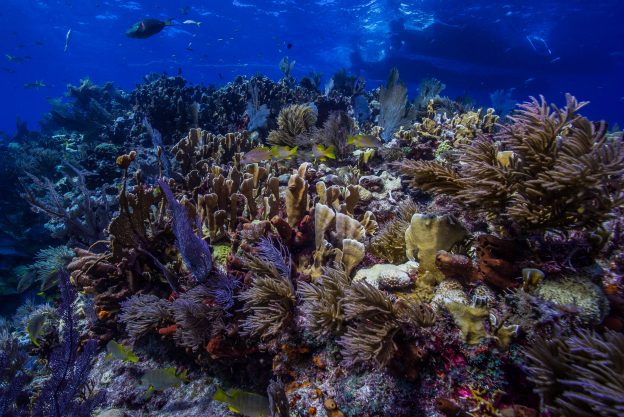





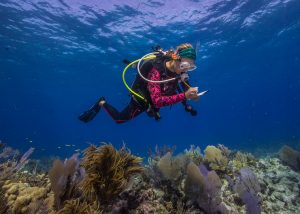
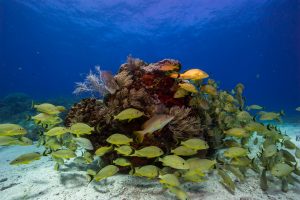
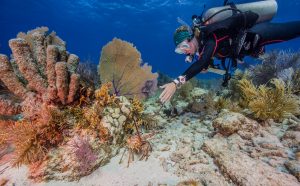
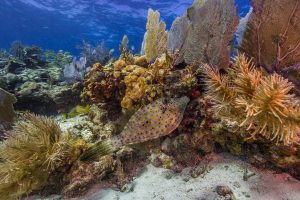




Great, high-energy blog, Shaun. You really captured the sense of field ops at Biscayne National Park. I hope you enjoy Dry Tortugas, it’s another of my favorite parks.
Great narrative and images! May Biscayne National Park post some of your images on its web page and social media?!
Yes Matt. All the images Shaun shoots are PD images and can be used at BISC.